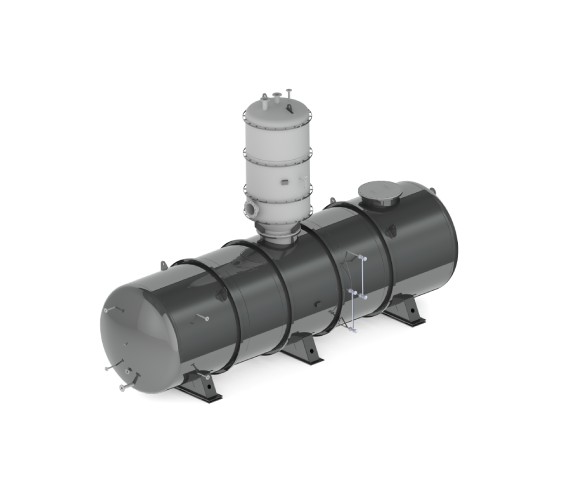Boiler Deaerator
Description
A boiler deaerator is an important component in steam generation systems that helps remove dissolved gases, primarily oxygen and carbon dioxide, from the feedwater before it enters the boiler. This process is crucial for preventing corrosion and improving the efficiency of the boiler. Here’s an overview of its features, benefits, and applications:
Key Features:
- Gas Removal: Deaerators typically utilize a combination of heat and vacuum or mechanical agitation to remove dissolved gases from water.
- Storage Tank: They often include a storage tank for heated, deaerated water that is ready for use in the boiler.
- Temperature Control: Deaerators maintain a specific temperature to enhance the removal of gases, usually above 200°F (93°C).
Specifications
Benefits:
- Corrosion Prevention: By removing oxygen and carbon dioxide, deaerators help prevent pitting and corrosion in boiler tubes and other components, extending the life of the system.
- Improved Efficiency: Deaerated water is less prone to scaling and deposits, leading to more efficient heat transfer in the boiler.
- Reduced Maintenance: Less corrosion and scaling mean lower maintenance costs and downtime for repairs.
Applications:
- Deaerators are widely used in:
- Power plants
- Industrial facilities
- Heating systems in various sectors


.jpg.jpg)
